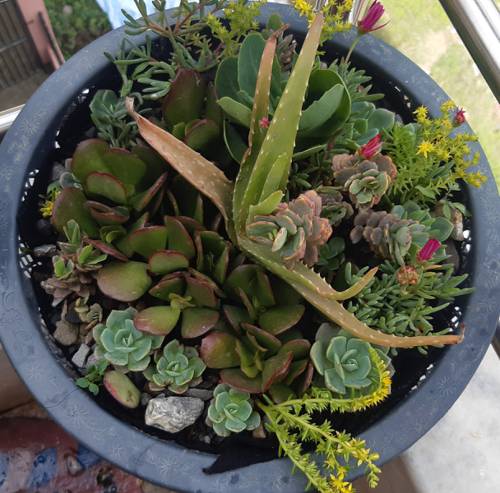
FAQ About Indoor Plant Adaptation to Cool Climates

What are the best indoor plants for cool climates?
Some of the best indoor plants for cool climates include the Snake Plant, ZZ Plant, Pothos, Spider Plant, and Peace Lily. These plants are known for their hardiness and ability to tolerate lower temperatures. It's essential to choose plants that can handle cooler temperatures since many tropical plants prefer warmer environments.

How can I keep my indoor plants warm during winter?
To keep indoor plants warm during winter, consider moving them away from drafty windows and doors, placing them in rooms with good insulation, and using plant heating mats. These mats can be particularly helpful in maintaining a stable temperature for the roots. Additionally, ensure your plants receive adequate light, either through natural sunlight or grow lights.

What temperature is too cold for indoor plants?
Most indoor plants prefer temperatures between 60°F and 75°F (15°C to 24°C). Temperatures below 50°F (10°C) can be stressful for many indoor plants, especially tropical species. It’s important to monitor your indoor environment and avoid sudden temperature drops that could harm the plants.

Can indoor plants survive in cold rooms without sunlight?
While some indoor plants are more tolerant of low light conditions, such as the Snake Plant and ZZ Plant, most plants will struggle without adequate light. It is crucial to provide artificial lighting, such as LED grow lights, to compensate for the lack of sunlight, especially during short winter days.

Do I need to adjust watering for indoor plants in winter?
Yes, indoor plants typically require less water during winter because growth slows down and water evaporation is less. Overwatering is a common issue during this time of year. It is best to check the top inch of soil and water only when it feels dry to the touch.

How can humidity levels affect my indoor plants in cool climates?
Low humidity levels in cool climates, especially during winter, can lead to dry air that affects plant health. This can cause wilting, brown leaf tips, and poor growth. Using a humidifier, misting plants, or placing a water tray with pebbles near your plants can help maintain adequate humidity levels.

What are some signs that my plant is too cold?
Signs that a plant is too cold include wilting, curling leaves, and browning edges or tips. You may also notice slow growth or the plant dropping leaves. It’s essential to address these symptoms quickly to prevent permanent damage.

Can succulents survive indoors in cold climates?
While succulents can survive indoors in cold climates, they require bright sunlight and careful watering. Succulents are sensitive to cold drafts and excess moisture, so they should be placed in sunny, warm areas of the home away from drafts, and watered infrequently.

How can I improve light conditions for indoor plants during winter?
Improving light conditions can be achieved by positioning plants near south-facing windows where they receive more sunlight. Additionally, you can use artificial lighting, like full-spectrum grow lights, to supplement natural light during the short daylight hours of winter.

Is it necessary to fertilize indoor plants in cold climates?
Fertilizing during winter is generally not necessary because most indoor plants enter a dormant phase and growth slows down. However, if you notice active growth, a light fertilization using a diluted liquid fertilizer can be applied sparingly.

What type of soil is best for indoor plants in cool climates?
The best soil for indoor plants in cool climates is well-draining with good aeration. Adding perlite or sand can improve drainage and prevent root rot, which is particularly important when plants receive less warmth and light.

How do I protect indoor plants from cold drafts?
To protect indoor plants from cold drafts, reposition them away from doorways and windows that may allow cold air entry. Additionally, sealing windows and using insulated curtains can help maintain a stable temperature in the room.

Can LED grow lights help indoor plants in cool climates?
Yes, LED grow lights are a great solution for providing additional light required by indoor plants during the darker months of cool climates. They are energy-efficient and available in various spectrums suitable for supporting plant growth.

Should I prune my indoor plants during winter in cool climates?
Pruning during winter should be minimal because indoor plants typically grow less during this season. However, removing dead or damaged leaves can help your plant conserve energy. Save heavy pruning tasks for spring when growth resumes.

What are the benefits of using a grow tent for indoor plants in cool climates?
A grow tent can create an ideal microenvironment for indoor plants in cool climates. It helps control temperature, light, and humidity levels, offering a more stable and optimized growing environment, especially beneficial for sensitive plants.

How does reduced sunlight during winter affect indoor plants?
Reduced sunlight can slow down photosynthesis, leading to stunted growth and weaker plants. Monitoring light levels and providing supplementary lighting can help maintain plant health and vitality during the winter months.

Are there any indoor plants that are particularly sensitive to cool climates?
Tropical plants like the Fiddle Leaf Fig, Calathea, and Anthurium are particularly sensitive to cool climates. They require careful placement in the home to ensure warmth and sufficient light. Extra care with humidity and watering is also important for these species.

Can I move my indoor plants outside in a cool climate?
Moving indoor plants outside in a cool climate is not recommended due to the temperature fluctuations and potential for frost. If the plants must be outside, ensure temperatures are consistently above 60°F (15°C) and that they are sheltered from wind and rain.

How do I deal with indoor plant pests during winter?
Pests can still be a problem even during winter. Regularly inspect your plants for signs of pests such as aphids, spider mites, or fungus gnats. Isolation of infested plants, proper sanitation, and using insecticidal soap can help manage these issues effectively.

What role does airflow play in maintaining indoor plants during cool climates?
Good airflow is crucial in reducing the risk of fungal diseases and mold, which thrive in stagnant air. Using a fan to ensure air circulation, particularly during humid winters, can help maintain healthy indoor plants.
